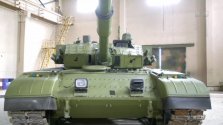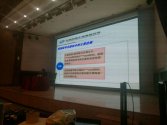Ummm, i really do not even know where to start. I do not know where you have been but you seem to have not been aware of the leaks, declassified data, publications over the past 5+ years. The T-72B types and especially the T-80U, T-90A are tough opponents in terms of protection. Leopard 2A4 even with C-tech based inserts is not any better protected than a T-72B with K1. It clearly falls behind T-80U and T-90A in terms of protection (both KE and CE).Very weird article because T-72, T-80, and T-90 regardless of what variants (except T-90M types) are nowhere close to M1A2, Challenger 2 or even Leopard 2A4 levels of protection and yet they consider several 40 to 50 tonne range T-72 variants and T-80 variants as superior in protection to M1A2 and Challenger 2. Um... no.
What it gets right in my opinion is that PLA hasn't been spending funds on tanks except for the usual stuff like numbers, training etc. They haven't been investing in tanks for decades and 98, 99, 99A are all patches and electronic upgrades along with mechanical upgrades but not really comparable to western MBTs (or Eastern MBTs like Type 10 and K2) in firepower or protection. Okay 99A gets frontal protection well by pure brute forcing it with extremely thick (for Soviet/Chinese tank doctrine) armour then adding further layer of wedge modular armour and a layer of modern ERA on top. This is like twice T-90M's frontal but all those nearly 10 tonnes of extra weight emphasized just for that frontal engagement, sparing close to no additional armour for sides... just like 96, 96A, 98, 99. Well I guess PLA doesn't plan on using tanks where they'd get flanked like that and I'm inclined to think they are mostly correct. It's simply not worth the weight and cost. Indeed naval and air are priorities for PLA... space, cyber, electromagnetic etc of course also but firepower and targeting from those domains all fall under air and naval I suppose.
What else it gets right is the weak firepower of Soviet, Russian, and Chinese tanks that make use of this particular type of autoloader design. It is quite limiting. When PLA commissioned the Type 15 light tank (its most modern tank) notice how they stood well clear of this old carousel autoloader design. I have doubts the 99A can defeat M1A2 and Challenger 2 in pure frontal at longer distances. I have stronger doubts any cuurent NATO MBT can destroy 99A in pure frontal at longer distances. But these days, pure tank vs tank is a bit of a silly and unlikely scenario. Let's just say NATO MBTs balance their 60T of weight with some attempt at providing side protection. 99A puts all 55+ tonnes of weight with only focus on frontal protection. 99A also makes use of ERA and actually pretty decent hull down type engagement geometry (not considering side concerns of course lol). If the armour technology is even comparably decent on 99A, then pure frontal protection may be superior to NATO MBTs because it has many, many tonnes more armour up front... and a modular layer... and then an ERA layer that NATO MBTs don't typically employ. Firepower though is just lacking because of that ammo + propellant limitation due to carousel autoloader. PLA hasn't bothered to replace 99 series MBTs partly because of funding going to other services and partly because, like the article claims, isn't necessary or where the domain of future wars will require resources and technological investment and competence.
TLDR: I doubt 99A can destroy some of the tanks they listed as "can be defeated by 99a" and very much doubt that 99A can't destroy some of the tanks listed as "can't be defeated by 99A"... like T-80BVM?? really? okay sure. T-72xyz? now you're taking the piss... meanwhile 99A can destroy Challenger 2? Is this like engaging the Russian types at 3km only frontal and mission kills don't count whereas it's engaging M1A2s and Leopard 2A4s from the side only? Confounding.
Article seems to be full of shit but I only read the summary posted. The 99A's pure frontal angles have superior protection but sides are considerably weaker to the point any shot to the side in fact 30 degrees at most would easily penetrate. 99A's firepower is weaker and the gun is inferior as it is so limited by the autoloader and two piece ammo.
What gave you the idea that just because that Russian and Chinese tanks weigh 5-10 tons less , there are less well protected ? Both Russia and to a lesser extent Chinese tanks are overall smaller vehicles. It strongly depends on where are armor is distributed. smaller volume ? less armor needed to protect it.
Also, on a side note, from what has been revealed and can be pieced together, the Challenger 2 is not as well protected as the M1A2 (both export and US version) in terms of KE resistance. The Brits still seem to have emphasized CE protection as more important. During the Greek tank trials the Challenger 2E protection was deemed inferior to both the M1A2 (1999 improved export special armor package). Challenger 2 was deemed barely better protected than the Leclerc UAE, which surprised the testers. From what i could gather in the past 2+ years researching it is that both Leclerc have very similar CE and KE protection requirements where the Challenger 2 gets a slight edge in terms of KE protection.
Both vehicles fall behind the M1A2 (1994 baseline export special armor package) in terms of KE protection. With the new and improved export special armor package the KE gab seems to have widened even more. In terms of CE protection I would not be surprised if the Americans caught up with the Brits with their new export special armor package.
Having said that, Leopard 2A5 types with their wedge add-on armor and D-tech based special armor have very tough turrets both in KE and CE protection terms. At least in terms of turret protection the 1999 M1A2 export model was deemed inferior to the Strv122 but still good (or very good?) overall.
TL, DR: The T-72B, T-80U and T-90A types do not have a protection issue but a firepower and firecontrol issue.
Also Leopard 2 (B and C-tech), M1 Abrams were not well protected against KE threats compared to their T-72B, T-80B, T-80U counterparts. Around the laste 1970s and early 1980s, M1, Leopard 2 and even Challenger 1 special armor solutions seem to have emphasized protection against CE threats first and foremost. Basically good CE protection but mediocre KE protection. With the soviets the results seems to have been reversed prior to the introduction of K1 and K5 ERA, good KE protection but mediocre CE protection.
Also, all the tanks you mentioned can destroy eachother from the front in typical combat ranges of around 800-1000 m. The issue is that in some instances one side has to rely on "luck" to hit a weakened zone. Eventually it comes down to kill propabilites.


